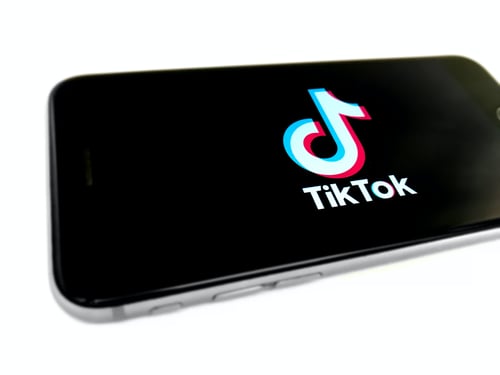
Blog

Social Media is Dying! (Not really! It’s Just Used Less & Differently)
You see that! All we had to do was write “Social Media is Dying!” and you had to click.
It’s also not likely that this is your first “Social Media is Dead” post to come across your inbox.
Heck, we’ve seen recently:
“The Age of Social Media is Ending” – The Atlantic
“Is it Okay for Millennials to Feel Sad that Social Media is Over?” – Business Insider
“Social Media is Doomed to Die” – The Verge
“Social Media Decline: Ending for Twitter, Facebook, Instagram, TikTok” – Business Insider (again from a publication that really wants to dance on social media’s grave)
“Twitter is Dying” – Bloomberg
“Social Media is Entering Its Flop Era” – Vice (written, interestingly, before Vice filed for bankruptcy!)
The Reporting of Social Media's Death ... is Greatly Exaggerated
Here’s the thing, “Social Media is Dead” has been a theme for about as long as we have had social media.
Google it and you come up with a Tedx Talk from 2010 called (you guessed it!) “Social Media is Dead” -- that was six years before TikTok was born.
Or read the article from 2015 proclaiming “Social Media is Dead. Big Data is On Life Support”
What is true, pointed out distinctly by Lestraundra Alfred in a HubSpot article last month, is that while social media may not be dying, it’s being used more selectively these days and users are interacting differently than in the past.
“The social media boom of the last decade is over. It’s not that people are no longer using social media – they are. They’re just using it less, and engaging differently,” wrote Alfred.
Time Spent on Social Drops for Just Second Time in a Decade
Brands are not wrong to suspect that users are spending less time on social media today because research backs that up.
Audience insights company GWI reported in June that research “has revealed that the average daily time spent on social media has declined globally since last year - a trend that’s been reported just once before in over ten years of tracking usage.”
“In 2022, the average daily time spent on social media declined globally leading to a drop in organic reach for brands and creators,” sums up Alfred.
GWI’s research shows that the decline in social media use is not across the board as TikTok continued its red-hot ascent and WhatsApp keeps gaining popularity.
“Despite social media usage declining overall, popularity of apps like TikTok is continuing to rise in 2023. Whilst WhatsApp retains its position as the world’s favorite social media platform, TikTok is climbing up the ranks, with the number of consumers citing TikTok as their preferred social media platform doubling in the last two years,” said GWI.
Users, Especially Younger Generations, Engaging Differently
Less time spent on social media obviously makes it harder for brands to reach their audience, but another factor is that users, especially younger generations, are engaging differently on social media.
- Keeping in touch with friends and family continues to be the most popular reason to be on social media (54 percent) with 27 percent using social media to catch up on the latest news and 22 percent wanting to know what’s trending or the buzz is about.
- TikTok has seen a jump in both users turning to it for news (up 41 percent) and the latest trends (up 52 percent).
- Gen Z are embracing voice notes – 28 percent more likely to send one than older generations.
- Almost 1 in 3 Gen Z users turn to social media to find inspiration for things.
“With product and brand discovery evolving across the likes of Instagram and TikTok, Gen Z discovers products on social media more than they do on search engines, and millennials aren’t far behind. Since 2019, finding new ideas or inspiration has jumped from 9th to 6th place in reasons for using the internet,” reports GWI.
HubSpot points out that what is missing from users' wish lists is to be sold to by brands – which of course, is the goal of most brands on social media.
“Social media users want to socialize, and social media platforms want to sell, leading to a misalignment between a product and its customer base,” writes Alfred.
Organic Reach is Falling Short for Many Brands
Hootsuite says that organic reach has been falling, not only on Facebook and Instagram, but across the industry.
“Organic reach decline has been a hot topic in social marketing circles for years now. So what’s the real state of affairs? As of July 2023, the average engagement rate of an organic Facebook post ranges from 2.58 percent down to just 1.52 percent,” reported Hootsuite. “Organic social media marketing is far from dead. But the way marketers think about organic reach needs to change.”
As a refresher, organic reach is the number of users who see your content through unpaid content and distribution.
Here is what Facebook says about the organic reach decline: “There are many factors that affect reach, including how people are engaging with your Page's content, how people have engaged with similar types of content in the past, the quality of the content and other factors such as time of day and whether people are on Facebook on their mobile phone or computer. It's normal for reach to change based on these factors.”
Instagram claims that the dwindling organic reach for brands is not a ploy to get them to pay for more ads: “While we’ve heard some people believe you need to pay for ads to achieve better reach, we don’t suppress content to encourage people to buy ads. It’s a better business to make Instagram more engaging overall by growing reach for those who create the most engaging content and sell ads to others.”
Ways to Improve Your Organic Reach on Social Media
The Hootsuite article suggests there are ways to improve your organic reach on social media including the following tips:
- Develop a consistent and strategic content plan: Quality content strategy and social media content calendar are a must.
- Customize your content for each platform: Optimize content for each platform.
- Provide real value: Let's face it, there’s a lot of content out there that doesn’t offer any real value. Original content that entertains, informs, connects, or motivates is best.
- Create content for the audience you want – not just the audience you already have: Don’t just play to the home team but reach out to the audience you want to target.
- Lean into video: It’s not going away any time soon if ever!
- Engage your employees: Some of your best brand advocates are in-house so use them.
- Highlight your brand values: Younger generations want to know what your brand stands for.
- Ask for engagement: Ask, not beg. You can’t constantly ask for engagement but strategically it’s a good idea to have this as part of your game plan.
- Collaborate and tag: Increase your reach by teaming up with another brand or social media creator.
Beware of Social Media Sales, Paid Advertising Fatigue
HubSpot says that brands need to be leery of sales fatigue, and even watch out for some social media platforms offering non-advertising options to their users.
“While advertising and sponsored content are nothing new on social media, users are feeling sold to more than ever, especially on TikTok,” wrote Alfred. “As evidenced by the lack of enthusiasm around Instagram’s failed in-app shopping platform, consumers in the U.S. don’t trust social media platforms enough to shop from them. Continuing to push in-app sales could cause friction between TikTok and its U.S. user base."
Snap+, a version of Snapchat that eliminates ads for users, now has 5 million users, which should be a warning shot across the marketing bow for brands that rely heavily on paid advertising.
Alfred says that brands should pivot and focus less on sales and more on making their social media a community where users can connect and learn.
“With that in mind, businesses on social media may benefit from focusing less on engagement and the hard sell, and more on generating conversation among potential customers and getting potential buyers to engage offline through in-person communities and experiential marketing," concludes Alfred.
In the meantime, we will file away our eulogy for social media for future use!
Subscribe to email updates
Recent posts

Related Articles

Topics

Topics

Topics






